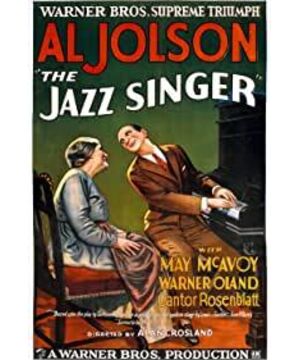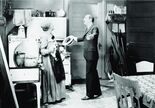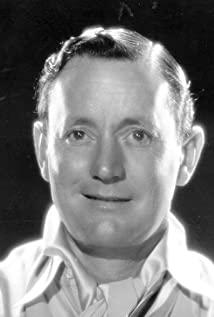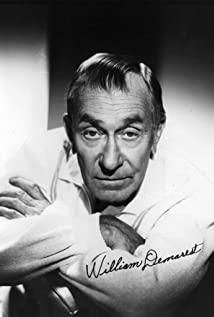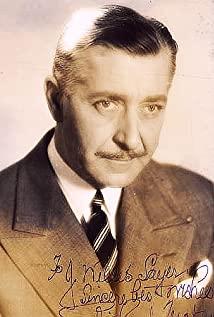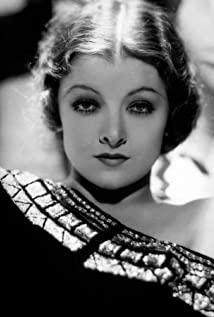In 1927, released by Warner Bros. USA and directed by Alan Crosland, "Jazz Singer" was released. This film was starred by Al Jolson, who was a very famous actor and singer at the time. This film uses Vitaphone technology, which is the first time to realize the synchronization of sound and picture. The Vitawind technology was invented in 1925. It is a sound film system that uses record recording and playback. It has been popular for nearly half a century. It was not until 1961 that it gradually withdrew from people's vision and was replaced by newer and better recording technology.
The emergence of Victoria Taifeng technology means that people can better record sound to achieve sound and picture synchronization. However, filmmakers who are accustomed to silent films do not seem to realize this. "Jazz Singer" is still filmed in silent film mode, with the scenes and images appearing alternately on the screen. In this movie, Al Jolson sang many songs, and when recording these songs, it was not deliberately. The dialogue between him and the audience, and the dialogue between him and his mother were recorded. Therefore, this Became the first film with dialogue.
According to the daughter of Harry Warner (one of the founders of Warner Bros.), at the premiere of "Jazz Singer", when Al Jolson said "Wait a minute, Wait a minute, you ain' before singing Toot toot toosie" "t hear nothing", the audience cheered out of joy and surprise. Every time Al Jolson sang a song in the movie, the audience applauded. When the plot advanced to the dialogue between Jackie played by Al Jolson and his mother, the audience was almost boiling. Perhaps today, we can’t realize after all that in the age of silent movies, the audience who are accustomed to just facing the exaggerated physical performances of actors are surprised to hear the actors on the screen in an instant. However, what is not to be said is that there is Amidst the applause, the curtain of the sound film era was slowly pulled up.
"Jazz Singer" tells a story that seems to be ordinary now, a traditional Jewish family, the father hopes that his son will inherit his career and become the choir leader of Judaism. Unexpectedly, my son loves jazz and wants to be a jazz singer. He ran away from home under the strong opposition of his father, and eventually he became a jazz singer and reconciled with his family.
The role played by Al Jolson could not be more appropriate. His life background allows him to deeply understand the role. Al Jolson was born in 1886 (it is also said that he was born in 1882) in Seredžius, a small town in Lithuania (then belonged to the Russian Empire). He was originally named Asa Yoelson and was born in a Jewish family. He was the fifth child in the family. He was also the youngest child, and even more coincidentally, his father also served as a rabbi in Judaism. In 1891, the Yoelson family immigrated to the United States. In 1902, Al Jolson got a job as the usher of the circus, and soon he was appreciated by the boss for his excellent voice and performed. In 1904, Al Jolson began acting as a black man in Brooklyn, New York. This performance made him popular, and he began to use this appearance extensively in his performances. At the end of "Jazz Singer", he also appeared in this way. Comics playing black people were reaching their heyday in the United States at the time. Many actors were famous for performing this kind of performance, but this kind of performance has a long history.
The exact time of origin of the performance of non-blacks playing blacks is no longer available, but it is generally agreed that it can be traced back to Portugal in 1441. It has been tepid for hundreds of years, until it came to the United States. This form of performance was first introduced in 1789 by a theater manager named Lewis Hallam Jr to introduce black elements into stage performances. Gradually, black elements have gained more and more attention and imitation. White people use soft charcoal, cosmetic paint or shoe polish to blacken their faces. They put on makeup to make their lips look more exaggerated, wearing gloves, wigs, and tuxedos or tattered shirts to complete the performance. They showed exaggerated body movements on stage, trying their best to imitate the unique and vigorous and funny accents of blacks to please the audience. The emergence of a black rap group composed entirely of white people was all the rage. The performance of the black rap group attracted a large number of audiences, and its forms of expression became more and more abundant, adding more funny plots and dances. However, most black characters are portrayed as lazy, cowardly, stupid, and neurotic images, and the racial discrimination deeply rooted in the hearts of white Americans is inevitably revealed. Most of the repertoires of black rap groups are based on local black music and are adapted and composed by white people. In this way, black music and white music in the United States constantly collide, merge and influence, and enrich and develop American music.
The performance of playing black people did not just stay on the stage of theatrical. There were movies like "Jazz Singer"; on the radio, white hosts of radio programs specially imitated black people to broadcast on the column; later in cartoons like Bugs Bunny, there were also such movies. The plot appears, and the episode in Bugs Bunny has been banned due to racial discrimination and will no longer be seen on TV.
This form of performance has been popular in the United States for more than a century, and it gradually disappeared after the African American affirmative movement. There is no doubt that this kind of performance has contributed to racial discrimination, but on the other hand, it has also allowed black culture to be understood by more people, although not in a good way.
Just as Jackie, who sang jazz music regarded by traditional families as improper in the film "Jazz Singer", finally reconciled with the family, the racial conflicts between blacks and whites will eventually be resolved in our efforts. The emergence of "Jazz Singer" as the first sound film also saw jazz beginning to be recognized by the public as a new mode of popular music. As for jazz, we will have other movies to tell the story.
Originally written in the "Zeyin Culture" public account
View more about The Jazz Singer reviews


